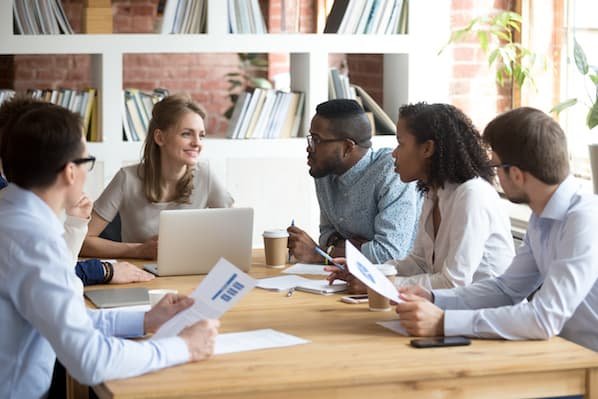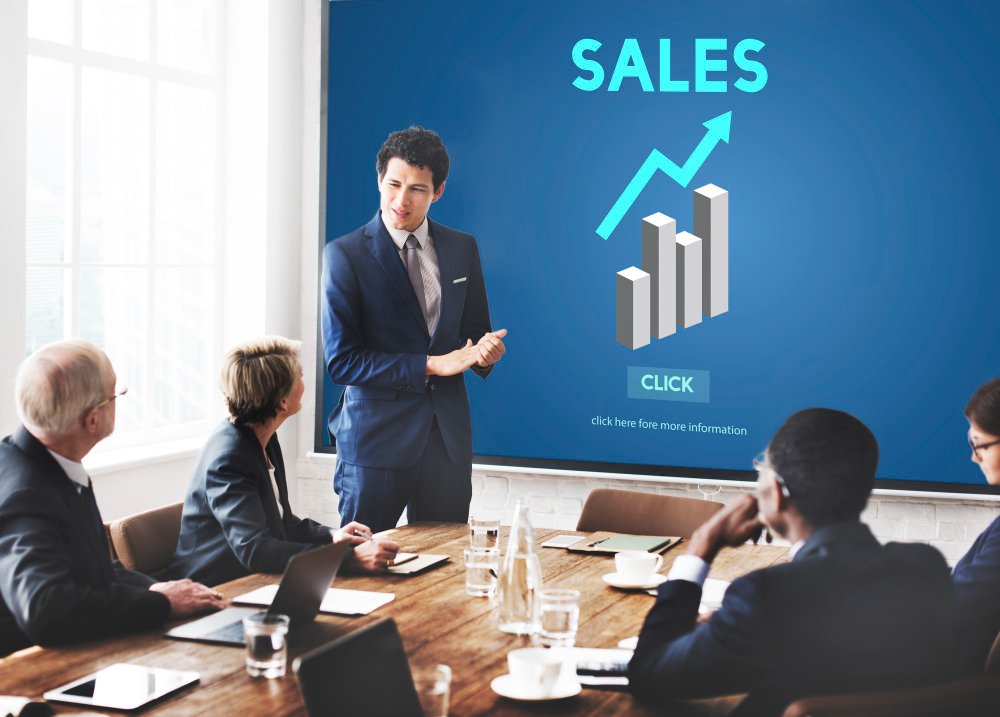Marketing is one of the principal domains in the industry with many changing dynamics. Market trends keep changing, influenced by various internal and external factors such as customer preferences, demand and supply factors, resources, raw materials, and more. The entire marketing process aims to prepare effective marketing strategies for a business by analysing the market trends.
Learning the fundamentals of marketing helps professionals succeed as marketing experts. With the dynamic nature of markets, it becomes even more important to understand how to implement marketing strategies in accordance with market conditions. Multiple courses for marketing professionals are available that can help enhance the marketing skills of individuals. One may consider signing up for a digital marketing course to gain a deeper understanding of the fundamentals and pillars of marketing.
Read on to understand the fundamentals of marketing, how it influences a business, common types of marketing, and how to build efficient marketing strategies.
What is Marketing?
The first and foremost thing to recognise is that marketing is a lot more than just trying to sell something. Marketing is a full-fledged process that requires intense planning, preparation of strategies, and, ultimately, proper execution. Marketing includes the various strategies and techniques companies and brands employ to market their products and services to customers.
Marketing is a great way of promoting a brand and creating awareness, followed by the popularity of the products among potential customers. It is a wide domain that includes everything, from undertaking market research to creating and managing advertisement content. Marketing is integral to all organisations as it helps the marketing team to create a position for their product in the market.
However, it is not a cakewalk. Creating marketing awareness, even for a single product, can be very challenging. Making consumers realise the value of a product is one of the main concerns. Understanding the target audience of a business, analysing customer behaviour and taking the necessary steps are the foundation of creating an effective marketing strategy.
The 7 P’s of Marketing
Marketing is not an individual concept, but it encompasses various sub-concepts. The 7 P’s of marketing is one such concept that every marketing professional must know. There are seven pillars of the fundamentals of marketing that guide individuals to take actions based on the important parameters.
However, the traditional marketing standards only consist of the 4 P’s of marketing: product, price, promotion and place. But with the advent of new marketing trends and the influence of social media, three other parameters — people, process and physical evidence, have been added to this list.
The main pillars (7 P’s) of marketing are enumerated as follows:
1. Product
The most important aspect of marketing is deciding on a product for a brand. The product is the main object that a company will market under the brand name. It is what the company has to offer to customers.
The product contains every detail about how it can prove useful to the consumers, why they should buy it, how it is better than the competitors’ goods and why consumers should care. Hence, thinking about what products to create and market should be the first step, even before starting the marketing process.
Additionally, the packaging and presentation of the product is also very crucial. Businesses must create attractive product packaging so that potential consumers make a purchase. Also, the product and the packaging should be convenient to use, and the packaging must include all the product specifications and features.
2. Price
After creating a product, the next thing that marketers decide is the best price for the product. Companies determine the cost of a product by conducting market research and analysis, examining the cost of production and studying the price structure of the competitor brands. This evaluation helps marketers understand how much consumers are willing to pay for a specific product.
However, a brand may charge a higher cost than its competitors if they launch a product that is better than the others available in the market. In such a scenario, even if the price of the product is a bit high, consumers will still want to purchase it because of its superior quality. Hence, the cost of a product should be decided by considering various internal and external factors influencing the product.
3. Promotion
Promoting the product of a brand is very important as it is one of the supreme ways of letting consumers know about the existence of the product. It is the way of communicating a brand’s product to the consumers. Promotion helps marketers deliver what they want to market. With the help of promotion, consumers get to know the uniqueness of the product, the purpose and the benefits of the same.
However, it completely depends on how well the marketers promote their products. Nowadays, multiple channels and ways of promotion exist, from print media to radio ads, TV advertisements, social media promotion, digital marketing, and so on. Marketers need to decide which promotion channel best suits their brand and product or whether they need multi-channel promotion.
Promotion aims to deliver a company’s product to its target audience. Implementing a suitable promotion technique is an integral marketing strategy.
Recently, companies have started using various inbound marketing strategies that are extremely helpful in bringing a large pool of customers to the brand’s website. Marketers create engaging blogs and content to convince potential customers to buy their products.
4. Place
It refers to where customers can visit and purchase the branded product. The place can be a physical store in a paramount location easily accessible to a wide customer base.
Additionally, if the business is available online, then the online platform is also a form of place in marketing. The online application or website must be user-friendly, stable, and secure. Operating a brand both online and offline proves extremely beneficial as it offers more exposure to the product.
However, marketers must know the amount of inventory they need to store to supply products according to customer demands. The inventory must be sufficient to be delivered to the consumers, but it should not be stocked more than the forecast amount as it may result in wastage.
5. People
Converting one-time customers to regular customers is one of the key targets of marketing. The best way to do this is by providing the best possible services to the consumers, resulting in repeat business. A satisfied customer recommends a good product to others, thus generating sales.
Hence, building a strong marketing communication team is a fantastic method of showcasing the brand’s reputation. In this way, companies can build good relationships with their clients and also gain new customers. This process continues, and the consumers become regular loyal customers of the brand.
6. Process
The process here means the delivery process of the product. A company may create an extraordinary product, but if the delivery process is not smooth, then customers will not buy it again.
Marketers must ensure they have built a seamless delivery process so that the consumers receive their product on time and in perfect condition. The delivery process must be efficient and reliable, both from the perspective of the marketers and the customers.
7. Physical Evidence
Today, the marketing process is mostly based on a digital ecosystem. Digital marketing has become so popular that the number of businesses setting up physical stores has decreased. However, businesses should still establish at least one physical store or office as it helps to build business reliability among consumers.
Preparing newsletters and brand pamphlets can be a form of physical evidence for digital marketers. One may study digital marketing to understand the importance of the same and how it helps businesses grow in this technologically advanced world.
Importance of Marketing for Businesses
Marketing starts by identifying a target audience and understanding their tastes and preferences. If marketers are well aware of customers’ needs, they can easily position their products and services according to their suitability.
Here are a few ways companies benefit from marketing:
Effective consumer engagement
The main aim of any business is to engage customers, and effective marketing helps do that conveniently. Marketing is valuable in drawing customer attention towards the brand’s product.
Customer engagement can be done in various ways, such as creating engaging content and posting it on social media platforms. Also, product experts can advise consumers which product suits them and what they can use. This way, customers also interact with the brand and learn about their products.
Building and maintaining the reputation
Building a brand reputation is not an easy task, but what is more challenging is maintaining a good reputation. The reputation of a business or a brand largely depends upon its growth and longevity. Marketing is an effective tool in maintaining a good brand reputation.
Various marketing techniques and strategies that yield positive results help grow a business’s equity. A brand can only grow when it meets customer expectations and receives positive feedback.
Building good relationships with clients
A business must maintain good relationships with the consumers so that they become regular customers of the brand and purchase the product they like. Building a long-lasting relationship with consumers is crucial for any business to grow and succeed.
However, marketing depends on various aspects, such as psychographic and demographic conditions and customer behaviour. Thus, marketers must properly analyse these factors to understand customers’ needs and wants and develop products accordingly.
Enhancing sales
Marketing is a research-intensive process that deeply analyses customer tastes and preferences and studies market conditions. It uses multiple methods to promote the products and services of a brand, which tends to increase the likelihood of increased sales.
Also, the after-sales services should be convenient for the customers so that they remain content with the products and services of the brand. Happy customers are like a treasure to the company. Hence, these marketing strategies ultimately help boost sales.
Staying relevant
Marketing is a great way to stay up-to-date about the various market trends and be relevant to customers. The market is very dynamic, meaning it does not remain stagnant. Hence, updating and improving marketing strategies allows businesses to stay relevant even when the market dynamics are changing.
Additionally, building and maintaining healthy relationships with consumers allows a brand to grow, stay relevant and reach more audiences simultaneously.
Making wise decisions
Marketing is an analytical process driven by data research and proper analysis of multiple internal and external factors that can influence a product or service a brand offers. In such cases, it helps marketers make informed decisions not based on mere guesses.
Marketing also helps solve various questions in the form of ‘why’ and ‘how’ in a business. These questions are mainly related to manufacturing and producing goods and delivering them on time to the consumers. Therefore, marketing is a key aspect in connecting businesses with society at large.
Types of Marketing Models
There are various types of marketing models, and a company needs to choose which model is best suited for their products and services. The changing market dynamics make it essential for marketing professionals to select a marketing model after thoroughly analysing their target audience, market trends, resources and other internal and external factors.
The following are the various types of marketing models that a company may opt for:
B2B marketing
B2B marketing is business-to-business transactions, one of the most famous forms of marketing. The B2B marketing model is frequently used when one company is selling their goods and services to another company. In this marketing model, companies can only sell their products and services to another entity and not to the customers directly.
B2C marketing
The B2C marketing model can be defined as business-to-consumer transactions. This is popularly known as retail business, where retailers sell their products directly to the customers. In this marketing model, companies or brands sell their products and services to the consumers and not to any other company. Also, the promotions of such a brand or a company are mainly done through various channels of advertisement.
C2B marketing
C2B marketing can be defined as consumer-to-business marketing. This is exactly the opposite of B2C marketing. In this marketing model, the consumer provides goods and services to the company. This implies that a consumer creates value for a commodity which the business utilises.
For instance, when a customer is providing valuable feedback or writing a product review and the company takes that suggestion for improving their product, it can be said that C2B transactions have taken place.
C2C marketing
C2C means customer-to-customer marketing model. This is a rare type of marketing where one consumer interacts with other consumers when they have some product or service in common. This marketing model provides opportunities for trading to the customers among each other, especially through an online ecosystem.
C2C marketing has gained popularity through online platforms such as eBay, Craigslist, Etsy, etc. Classified advertisements and auctions are the best examples of the C2C marketing model.
Types of Marketing Strategies
The marketing approach of a company has a major impact on its success. An effective marketing strategy accelerates growth and builds a large customer base.
Marketing professionals are responsible for coming up with innovative and effective marketing strategies. Some of the most common types of marketing strategies are listed below:
Digital Marketing
Digital marketing has recently become the most celebrated marketing strategy because of its various advantages, such as cost-effectiveness, greater reach, and online marketing. It is one of the fastest-growing marketing strategies today and is crucial for any company looking to expand its customer base.
When a company reaches a larger audience and successfully raises customer awareness, the company’s digital marketing efforts will start to pay off. According to this strategy, marketers generally use websites, email newsletters, SEO content, paid advertisements, paid partnerships, etc., to promote and market their products and services.
Print Marketing
The print marketing strategy is one of the oldest forms of marketing where marketers promote and market their product by releasing advertisements in newspapers, magazines, journals, pamphlets and so on. The print marketing strategy is used to convey a message directly to the customers about the products and services of the brand via physical evidence.
This is a traditional marketing strategy; people can still see individuals distributing flyers about exclusive deals, discounts and newly launched products of a brand. Even in the digital era, print marketing strategy still proves to be helpful as it targets customers unfamiliar with the online mode of shopping.
Experiential Marketing
Experiential marketing strategy is one of the most convenient strategies from the customers’ point of view. In this strategy, the company creates an interactive experience for the consumers with the intended products and services of the brand in the form of an event, festival or show. So the customers can test the products and services before buying them.
This marketing strategy is fantastic for building good customer relationships by offering them a good experience with the product. In experiential marketing, the marketers do not approach the clients as per the traditional marketing methods. Rather, they create a new experience for the customers by giving out free samples of products, conducting giveaways, providing workshops and so on.
Influencer Marketing
Influencer marketing is a new-age marketing strategy that has proven extremely profitable for companies. In this marketing strategy, the company approaches someone with a huge social media following to promote their products and services.
The influencers can be public figures, celebrities, sports personalities, content creators, bloggers or anyone who is fervent about the subjects they post on their social media profiles. People generally follow influencers to know about the new updates of any product or the latest news in their niche. Businesses can gain customers if the potential customers see the influencers promoting the brand’s product and then purchase.
Affiliate Marketing
In this digital era, affiliate marketing is a great marketing strategy in which a company partners with someone with a large audience pool, such as celebrities, content creators, sports personalities, etc. Brands ask famous personalities to promote their products and services; in exchange, they earn a commission every time a customer purchases. Essentially, it is focused on recommendations and the purchases made as a result of those recommendations.
Affiliate marketing increasingly helps diversify an existing company’s revenue sources. This marketing strategy is very convenient, especially for young generations. The affiliated partner creates and posts promotional content online on their social media handles or blog pages to attract their audience’s attention and convince them to purchase the brand’s product.
Ways to Develop Effective Marketing Strategies
Developing an effective marketing strategy is one of the key aspects of marketing. Marketers need to consider several factors before coming up with a marketing strategy. The marketing team should be clear about the short-term and long-term goals of the company and then devise a marketing plan based on real-time data and research-intensive.
Here is how marketing professionals can develop an effective and efficient marketing strategy:
- Define an objective: Defining an objective is the first step in starting a marketing campaign. A company should have a goal it wants to achieve in the near future regarding that particular product or service.
- Research about the target audience: Identifying and researching the target audience is integral to a successful marketing strategy. Brands can locate their target audience by restricting their search to a specific geographical location, age, gender, use of social media and so on. Collecting quantitative and qualitative data offers greater insight into the market trends.
- Decide on a budget: A budget encompasses how much a company is willing to pay for a particular marketing campaign. According to the budget, marketing professionals will employ tools and resources for conducting the campaign. The organisational budget will also define the channels of marketing they can choose to promote and market their products and services.
- Develop a plan: The next stage is to build a plan to market a specific product or service. This stage includes the duration of the campaign, the amount of area the campaign will cover, the channels of promotion, the frequency of advertisements, etc.
- Properly execute the plan: Once a marketing plan is decided and drafted, professionals should ensure they do not deviate. The brand should launch its marketing strategy and execute it properly, just as they have decided.
Ways to Track the Success of a Marketing Strategy
Launching a marketing strategy is not enough. Professionals must constantly monitor the campaign’s effectiveness to ensure it functions according to plan.
One can track the effectiveness of a marketing strategy in the following ways:
- Marketers can measure whether they have achieved their objective or not. It can be in the form of increasing sales conversion, building a larger pool of customers, etc.
- Marketing professionals can install analytical software to analyse the everyday report of a marketing strategy.
- The return on investment is a great way of determining whether the marketing strategy is successful or not. Marketers should match the actual return on investment with the anticipated one.
- Companies can also take on board experienced marketing managers to utilise their skills and adhere to their advice.
- For an extremely critical marketing strategy, companies can also appoint a Chief Marketing Officer (CMO) who can closely monitor the day-to-day operations of that campaign.
Summing Up
Every company must comprehend the fundamentals of marketing before beginning any marketing campaign. In this dynamic digital era, marketing professionals must remain updated about market shifts and new marketing strategies.
The world of marketing is slowly shifting from the traditional modes to the digital methods. For marketing professionals, knowing the principles of marketing has become extremely crucial. One may sign up for an effective digital marketing course to learn the fundamentals of marketing and the concepts of digital marketing, as it has become the need of the hour.
If you are a marketing professional looking to learn the marketing fundamentals, consider registering for the Post Graduate Certificate Programme For Emerging Chief Marketing Officers by Imarticus. This programme will help you learn unique marketing strategies and find your way to becoming a successful CMO in future.








